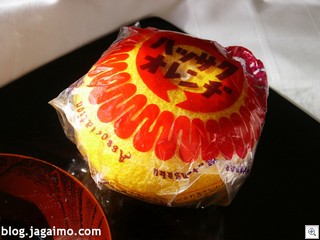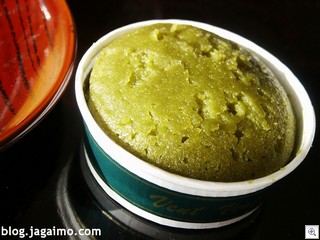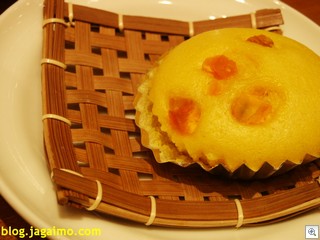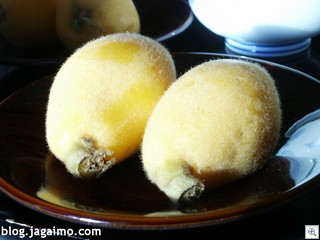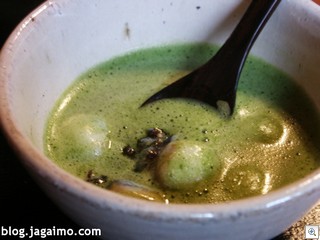In a break from the pattern I set a couple of years ago, I went to the Hoteres show on the second day of the FoodEx/Hoteres pair of trade shows; in past years, I usually went on day 3.
Hoteres focuses mostly on restaurant and hospitality industry needs, and this includes equipment, smallwares, guest amenity products, spa and bath, and foodservice products such as frozen pastry doughs for all of those fancy-looking bakeries all over Japan.
I missed most of it while touring the rest of the floor, but apparently some sort of Japanese national barista championship was going on in the food demo stage this afternoon. I managed to catch one contestant show off his skills producing Seattle-style latte foam patterns, a simple pulled shot, and a signature drink/dessert that I’d be tempted to attempt myself. His signature drink was, like most drinks that move beyond the basic latte/straight espresso/con panna pattern, more dessert than coffee, but instead of producing a dessert masquerading as coffee he embraced the idea that a barista could produce a savvy, elegant dessert. Within a strict time limit, he made a whipped cream flavored with chocolate and maybe some espresso, which he piped into a rose shape, then placed in a wide serving cup. He created an infusion of orange peel and milk, simmered briefly, then he whipped an egg or two with some sugar. He produced maybe four shots of espresso which he combined with the strained orange-infused milk with perhaps a bit of chocolate sauce, and he worked the milk into his egg-sugar mixture, creating a kind of liquid custard. He carefully poured the custard into the cup, enabling his whipped cream rose to survived the violent heat of his custard.
The usual assortment of espresso machines, ovens, gas ranges, automatic sushi-making and gyoza-filling machines took up a fair percentage of floor space in the equipment show halls. Hiromi noticed a vendor producing a machine that automatically measures and serves portions of rice into a bowl for donburi-mono, which sounds preposterously unhelpful unless, of course, you happen to run a donburi shop that has huge lunch crowds and want to shave off several seconds per customer to squeeze in as many people as possible without over– or under-portioning.
My favorite fryer company from two years ago was back this year, demonstrating their clever “Clean Fryer” system that filters out liquids and debris into a collection tank at the bottom of the machine. Instead of creating a clogged grease trap, restaurants just need to empty out the slightly dirty wastewater that gets collected below. The gimmicky demo I saw two years ago featured ice cubes and other potentially explosive foods dropped into the fryer without disastrous after-effects; the water gets absorbed by their filtration system, rather than creating a burst of pressurized steam erupting through a batch of hot oil. The wastewater collection area is apparently stable enough to sustain life, as this year’s demonstration gimmick featured tenkasu-fed goldfish swimming obliviously in the glass-walled collection tank.
I’m sure it’s useful for oden-making companies, but I was a little surprised to see a machine that automatically and precisely peels boiled eggs…
For the Japanese spa market, the most amusing product I saw was a variation of the classic “Ashiyu onsen”, or hot spring foot bath. The typical ashiyu onsen is just a small publicly-accessible covered bath that people can take advantage of to get a bit of a respite in a hot spring town. The product we saw was basically a foot bath with a picnic table mounted over the bath, and bench seating… you can imagine a small outdoor restaurant serving simple foods as people relax with their bare feet warmed by hot water, perhaps operating deep into the winter.
The coolest piece of equipment I saw this year was all gimmick, but potentially interesting as a foundation for a franchisable business concept that would give Cold Stone a run for its money: the teppan ice cream maker. The idea is modeled after a teppan, or teppan-yaki grill, but meant to produce cold foods. A shop would use the machine to make made-to-order ice cream, sorbet, and so on, with a -30°C chilled plate, enabling completely custom, made-to-order custom frozen treats. The operator pours sweetened liquids (a gelato or ice cream base, or sorbet base), and can add fresh fruit or other items at the customer’s request, and scrape everything together teppan-yaki style to produce a scoopable, lickable treat. I think it would translate readily to the U.S. market, even if nobody gets the reference to that style of cooking, just because it’s so dramatic to watch ice cream made before the customer’s eyes in just a few seconds.
I didn’t spend as much time as I usually do in the smallwares section, since my knees have been giving me a lot of trouble, but with my current business objectives, I’m thinking any substantial mass-produced ceramicware that I might import won’t be possible to kick off until next year, at the earliest. I’d love to offer some more stylish wafuu ceramics and lacquerware than the larger U.S. importers are doing, but I’m going to continue to keep these kinds of companies in my back pocket rather than invest a lot in buying inventory from them right now.
As I had originally planned for today, I met with a company that makes some really cool hand-tied flower teas, mostly for the hotel and gift markets in Japan, designed in Japan and made by Chinese tea companies. They’ve moved beyond the already innovative flower teas I saw last year that have different stages of expansion, and now have some novel shapes such as ducks, fish, and stars. It may sound a little funny, but the effects can be quite visually stunning to watch.
Tomorrow I’m going back to FoodEx for Day 3, but I have another late night ahead because of another vendor meeting, so I may not get as far as posting photos I’ve taken outside of the trade shows.
